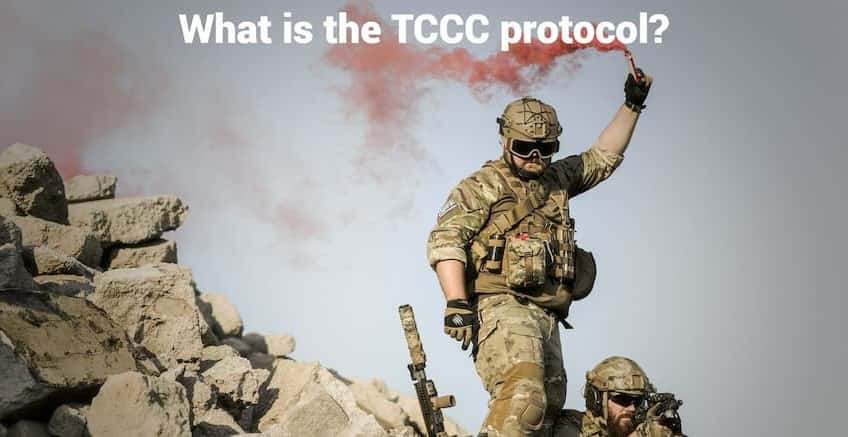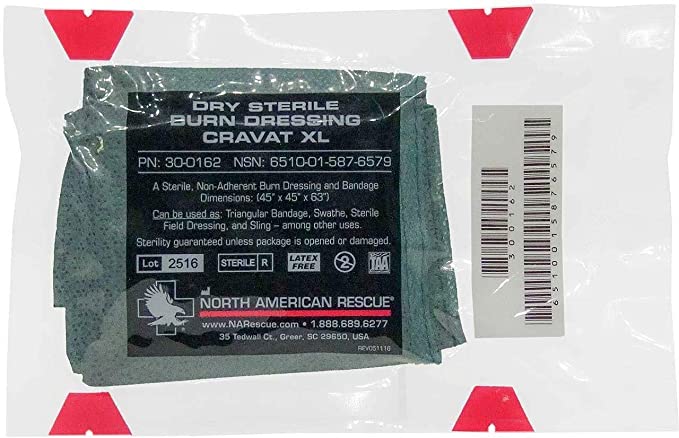What is the TCCC protocol?
Content
- History of the TCCC protocol
- TCCC implementation in the world
- Tactical combat casualty care: TCCC protocol overview
- Integrating tactical medicine into the civilian sector
- Impact of the TCCC protocol on survival and statistics
- Conclusion

The Tactical Combat Casualty Care (TCCC) protocol is a comprehensive set of instructions and procedures developed by the US Department of Defense and the US Special Operations Command to provide medical assistance to casualties in combat and tactical conditions. Its aim is to increase the chances of survival for injured military personnel during combat operations.
The TCCC protocol consists of three stages of medical care: care under fire, tactical field care, and tactical evacuation care.
During care under fire, an immediate response to injuries during active combat operations occurs, while tactical field care involves providing medical assistance as quickly as possible after leaving the combat zone.
Tactical evacuation care, on the other hand, provides further treatment for the injured during their transportation to more equipped medical facilities.
The TCCC protocol is aimed at the rapid assessment and treatment of life-threatening injuries such as massive hemorrhage, compromised airway, and tension pneumothorax.
Furthermore, the protocol emphasizes the importance of effective communication and teamwork among all members of the tactical group, including medical personnel, fighters, and leadership.
History of the TCCC protocol
The history of the Tactical Combat Casualty Care (TCCC) protocol dates back to the 1980s when the US Army recognized the need to improve medical assistance for casualties in combat conditions.
The initial military approach involved stabilizing the injured for transportation to medical facilities, but this method often proved insufficient, resulting in unnecessary loss of life.
In 1993, a joint program was launched between the US Special Operations Command (USSOCOM) and the National Association of Emergency Medical Technicians (NAEMT) to develop a set of instructions and procedures for providing medical assistance to casualties in tactical and combat conditions.
This initiative arose from the realization that injuries sustained by military personnel in combat significantly differ from those in civilian situations and require a different approach to medical assistance.
Over the next few years, a committee of medical specialists and servicemen developed the initial version of the TCCC protocol, based on the latest research and best practices in traumatology. The first version of the protocol was published in 1996 and later revised in 1999 and 2003.
Following the terrorist attacks of September 11, the TCCC protocol underwent significant changes, emphasizing the need to improve medical services in high-risk conditions. USSOCOM collaborated with the Committee on Tactical Combat Casualty Care (CoTCCC) to update the protocol and incorporate new developments in medical technology and knowledge.
The current version of the TCCC protocol was published in 2020 and includes several updates and revisions based on the latest research and best practices. The protocol continues to evolve and be updated with the emergence of new knowledge and technologies.
TCCC implementation in the world
The implementation of the Tactical Combat Casualty Care (TCCC) protocol worldwide began in the late 1990s, shortly after the publication of the first version of the protocol in 1996.
The initial adoption of the protocol was focused on training US military personnel, but later it spread to other countries and organizations worldwide.
The US Armed Forces played a key role in disseminating the use of TCCC globally. The US Department of Defense (DoD) provided training and resources for servicemen from other countries and funded the translation of TCCC materials into several languages.
The adoption of the TCCC protocol by other countries and organizations was driven by its proven effectiveness in increasing the survival rates of casualties in combat and tactical conditions. Many countries saw TCCC as a means to enhance their military medical capabilities and improve the assistance provided to their armed forces.
The implementation of TCCC also received support from international organizations such as NATO and the International Committee of the Red Cross (ICRC), which recognized the importance of the protocol in reducing the number of preventable deaths and improving the quality of medical assistance provided to casualties in combat and tactical situations.
Currently, TCCC is used by both military and civilian organizations worldwide and is considered a key element in saving numerous lives in various situations.
The protocol is continuously refined and updated based on new research and developments in medical technologies and knowledge. The Committee on Tactical Combat Casualty Care (CoTCCC), responsible for the development and review of the protocol, actively collaborates with medical specialists from around the world to ensure that TCCC remains a recognized standard in trauma care.
Tactical combat casualty care: TCCC protocol overview
Tactical Combat Casualty Care (TCCC) is a key component of the TCCC protocol and encompasses a series of procedures and approaches aimed at providing medical assistance to casualties in combat situations.
An overview of this section of the TCCC protocol reveals detailed procedures used for rapid and effective medical support in the battlefield.
Let's consider some key aspects of TCCC:
- "Return fire and safety" principle. The first step in providing medical assistance is ensuring the safety of the casualties and medical personnel. This may involve returning fire, establishing a defensive position, and assessing the surrounding threats.
- Casualty assessment. Medical personnel swiftly assess the condition of casualties, determining the severity of injuries and the priority for assistance. This allows for the efficient allocation of resources and planning of actions.
- Hemorrhage control. Bleeding is one of the leading causes of death in combat conditions. TCCC provides instructions for controlling bleeding, including the application of tourniquets, applying pressure, and using specialized dressings.
- Airway management. Maintaining open airways is critical to sustaining vital bodily functions. TCCC teaches methods for airway protection and providing necessary assistance in cases of choking or airway damage.
- Pain and infection management. TCCC includes instructions for providing pain relief and infection prevention to reduce the risk of complications and improve treatment outcomes.
- Casualty evacuation. In the final stage of TCCC, casualties are evacuated from the battlefield for further treatment in medical facilities. This can be accomplished through various means, including ground transport, helicopters, or naval ambulances.
All these aspects of TCCC are interconnected and integrated to ensure rapid and effective medical support in the battlefield. Proper training and education of medical personnel on TCCC principles play a crucial role in ensuring successful treatment of casualties and saving lives in combat conditions.
Integrating tactical medicine into the civilian sector
Although the Tactical Combat Casualty Care (TCCC) protocol was initially developed for military purposes, its principles can be successfully applied in the civilian sector.
Many elements of TCCC, such as rapid response to emergencies and the use of advanced treatment methods, can be beneficial in medical practice when providing assistance in accidents, disasters, and other emergency situations.
Many countries already use TCCC principles to train their medical personnel for emergencies. Integrating tactical medicine into the civilian sector can significantly increase survival rates and alleviate the consequences of emergencies.
The integration of tactical medicine into the civilian sector is an important aspect of developing emergency medical response systems and crisis conditions.
This process involves adapting tactical methods and approaches used in military medicine for application in civilian settings, such as road accidents, natural disasters, mass casualties, and other emergency situations.
Below are some key aspects of integrating tactical medicine into the civilian sector:
- Training and education. Integrating tactical medicine into the civilian sector involves conducting training courses, seminars, and exercises for medical personnel, rescuers, police, and other specialists who may encounter emergency situations. These activities aim to increase skills and knowledge in tactical medicine and prepare for effective response to emergencies.
- Standardization of procedures. Integrating tactical medicine into the civilian sector involves developing standards and procedures that meet the needs of civilian emergency situations. These standards define optimal practices for providing medical assistance in conditions of limited resources and high risk.
- Application of advanced technologies. Integrating tactical medicine into the civilian sector also involves the use of advanced medical technologies and innovative tools that can facilitate and improve the provision of medical assistance in emergency situations. This may include the use of telemedicine, automated patient monitoring systems, and artificial intelligence technologies for data analysis and decision-making.
- Collaboration with the community. An important aspect of integrating tactical medicine into the civilian sector is collaboration with the community and actively engaging the public in the process of providing medical assistance in emergency situations. This may include conducting information campaigns, training for the population in first aid, and preparedness for emergencies.
The integration of tactical medicine into the civilian sector is an important step in ensuring effective medical support and protecting public health during emergency situations and crisis conditions. This process requires cooperation and coordination between different sectors of society to ensure safety and protection of the public.
Impact of the TCCC protocol on survival and statistics
The Tactical Combat Casualty Care (TCCC) protocol emerged in response to the common need for improving medical care on the battlefield.
Before the advent of TCCC, medical assistance in combat conditions typically involved stabilizing casualties for further transport to medical facilities. However, this approach often led to preventable deaths due to delays in treatment and inadequate on-scene care.
TCCC was developed to address these issues by providing a framework for effective medical care in combat and tactical conditions.
This protocol is based on the latest research and advanced practices in trauma care and is regularly updated to incorporate new advancements in medical technologies and knowledge.
The implementation of the TCCC protocol significantly improves survival rates among wounded military personnel. Studies have shown that utilizing TCCC techniques in combat situations can increase survival rates by 25%.
This is partly attributed to the emphasis on rapid assessment and treatment of life-threatening injuries, as well as the use of methods such as tourniquets and hemostatic dressings to control bleeding.
The TCCC protocol has also been adapted for use in civilian emergency medical services, especially in conditions of mass casualties or active shooter incidents.
The principles of TCCC are similar in both military and civilian contexts, focusing on rapid assessment and treatment of life-threatening injuries, as well as effective communication and teamwork among all members of the emergency response team.
In addition to the three primary stages of care (care under fire, tactical field care, and tactical evacuation care), the TCCC protocol also includes guidelines for casualty sorting, movement, and reporting.
These guidelines help ensure proper care for the wounded and their prompt and efficient transportation to medical facilities.
Overall, the TCCC protocol is an integral component of modern military and civilian emergency medical care.
Its focus on rapid assessment and treatment of life-threatening injuries, effective communication and teamwork, and continuous improvement through research and development have helped save numerous lives in combat and tactical situations.
Conclusion
The TCCC protocol is an integral part of medical support for military personnel in combat conditions. Its history, implementation, and tactical aspects emphasize the importance of standardization and professionalization of medical assistance on the battlefield.
The impact of the TCCC protocol on survival rates and statistics testifies to its success in ensuring the safety and protection of servicemen. The integration of tactical medicine into the civilian sector could have significant implications for ensuring the safety of the population in emergency situations.



